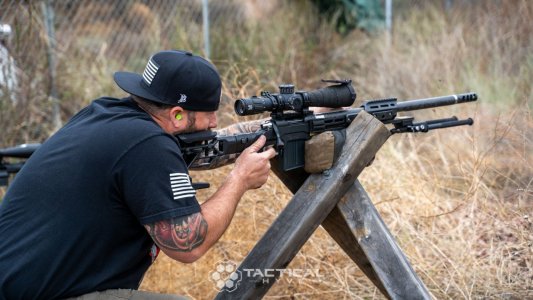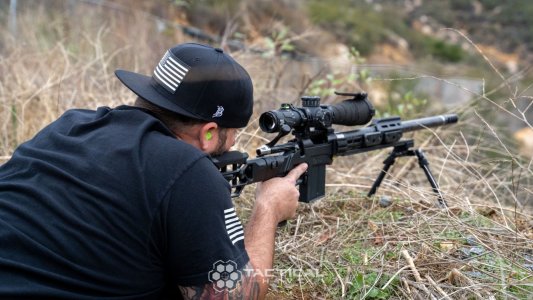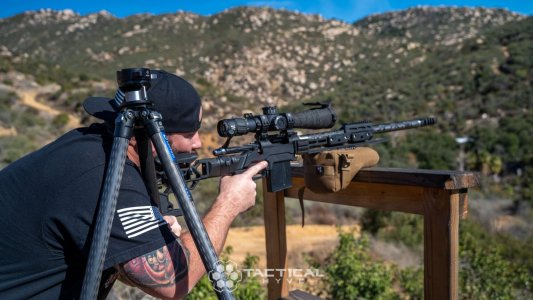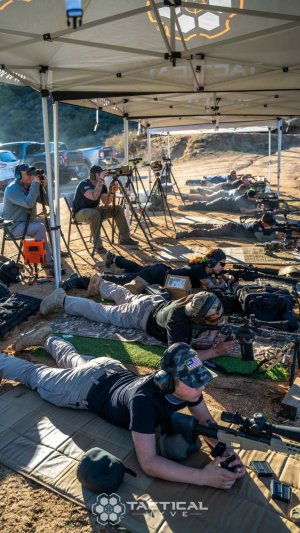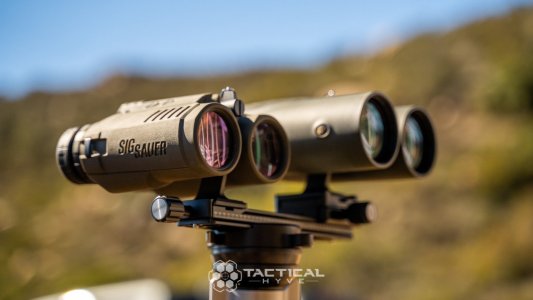Rules state that max round count per stage is 8
2022 SEASON NRL HUNTER SERIES RULES AND REGULATIONS
The NRL Hunter Series is an evolving competition series which intends to offer participants an educational and exciting means to practice shooting in unknown hunting-like conditions. The following rules and regulations govern the participant expectations and conduct.
SECTION 1, NRL HUNTER SERIES SAFETY
All firearms shall remain unloaded until the competitor is in the shooting area and is ready to engage the first target (this is a safety measure in order to reduce the threat of an AD or ND)
1.1 General Rifle Safety
Always point your rifle in a safe direction. Never point a rifle at anything you don’t intend to kill or destroy.
Always keep your rifle unloaded until ready to use. Treat all rifles as though they are loaded even if you believe otherwise.
Keep your finger out of the trigger guard until you are ready to fire.
Know your target and what is beyond.
Always wear proper eye and ear protection and ensure others have the same before firing.
Never use alcohol or drugs while shooting.
Individual Range safety rules always supersede NRL HUNTER rules.
1.2 Rifle Safety While at an NRL HUNTER Match
NRL HUNTER competitions are always cold ranges. All rifles are to be unloaded, with magazines out and bolts to the rearward position. Chamber flags are always to be utilized so that anyone can identify an unloaded rifle. The rifle may only be loaded, and chamber flag removed at the discretion of the Range Officer. Once the stage is complete, the magazine shall be removed, bolt in the rearward position and chamber flag inserted before the rifle is removed from the firing line.
Only ground rifles in a proper rifle rack, or wherever the Range Officer designates as a safe location and direction.
When moving to another shooting location, always ensure the rifle is pointed in a safe direction and the chamber is empty.
1.3 Rifle Safety During Your Stage
Always wait until you are at the first shoot position before you remove your chamber flag and insert magazine.
Stages always begin with an empty rifle and bolt to the rear unless specifically directed by the match booklet and the Range Officer.
Any movement or transition must be done with the bolt to the rear and an empty chamber. The only exception to this rule will be with the use of semi-automatic rifles but only at the approval of the Match Director. If the MD allows this, the shooter must engage the safety, and yell safe loud enough for the RO to hear with ear protection.
During movement, the 180 rule must always be adhered to. The 180 rule refers to only pointing the rifle within 90 degrees of straight forward. There may be stages when a Range Officer reduces the 180 rule even more. Always follow directions and be aware of where you are pointing your rifle.
1.4 Safety Violations and Penalties
1.4.1 Violation of the cold range rule: Any shooter who has violated the cold range rule shall be issued a warning. A second violation will result in a stage zero. Next violation will result in a match DQ and removal from competition. This includes a live round in the chamber, magazine inserted, a closed bolt, or chamber flag not being used. The only violation that will be issued to having a live round in the chamber while not shooting shall be a match DQ.
1.4.2 Muzzling and/or violating the 180 rule: Muzzling is pointing or sweeping another person’s body with the muzzle of a rifle while the rifle is in possession of a person. There will be no warnings of this unsafe act. If any shooter muzzles any other person, that action shall result in match DQ and removal from competition. It will be the duty of the RO to inform the MD of the infraction, and the MDs call to issue the match DQ. Flagging can only occur when the rifle is in hand. Walking in front of a rifle muzzle that is on the ground in the holding area does not constitute a safety violation. All efforts should be made to avoid flagging yourself even if the weapon is deemed “safe”
1.4.3 Unsafe transitioning: Transitioning, or movement without having the bolt to the rear will result in the Range Officer having the shooter correct the situation, then move back to the previous firing position before resuming the course of fire. A second violation will result in a zero for the stage. A third will result in the shooter getting a match DQ and removal from competition. If the match allows for Semi-Automatic rifles to move with a closed bolt with the safety engaged, the same rule applies if the shooter does not either engage the safety and/or yell safe.
1.4.4 Negligent Discharge (ND). A Negligent Discharge is defined as any round unintentionally discharged from a firearm during a transition, movement, and/or weapons manipulation; or a round intentionally discharged during a ceasefire period. The competitor shall receive a match DQ and removal from competition.
1.4.5 Accidental Discharge/Mechanical Failure (AD). An Accidental Discharge is defined as any round unintentionally discharged from a firearm due to a mechanical failure. The participant will be removed from the event until he or she can repair the rifle to safe working order. The shooter will receive a zero for that stage, and all follow up stages will be forfeited during this down time.
1.4.6 False Starts: Firing before the start signal will result in a zero for the stage.
1.4.7 If a Match Director judges a shooter to be under the influence of drugs or alcohol during competition, the shooter will receive a match DQ and be removed from competition. The shooter will not be allowed to drive from the competition while still intoxicated.
SECTION 2, NRL HUNTER MATCH FORMAT
A match will consist of 12 or more stages. Stages will consist of 4 target engagements. An engagement is defined as one target or position depending on the layout of the stage. Stage layout options are: 1 position with 4 targets, 2 positions with 2 targets, or 4 positions with 1 target. Maximum round count per stage is 8 rounds.
It is a goal of the match directors to replicate hunting scenarios which may be encountered in the region which their match is held or test the shooter’s skill set in a field scenario.
2.1 Shooter’s Responsibilities
2.1.1 Shooters should always treat Match Directors and Range Officers with respect. From time to time, disagreements arise between shooters and match officials. This is fine, so long as mutual respect and calm communication occurs. The Match Directors ruling is always final.
2.1.2 Shooters in the Precision Rifle discipline are regarded as the most professional and highly educated in any discipline. All participants in NRL HUNTER matches are looked upon as Safety Officers. Any participant that witnesses an unsafe act is to call for a cease fire and stop the unsafe act. The participant should then inform the closest Range Officer of the act.
2.1.3 It is the shooters responsibility to know the NRL HUNTER Rules and Regulations prior to a competition.
2.1.4 Shooters should actively participate in any stage briefing to move the shoot along smoothly.
2.1.5 Shooters shall understand that at the beginning of the stage, when asked by the Range Officer “Shooter do you understand the course of fire?” If they give an affirmative answer, that will be their last opportunity to get clarification. Because of this, arguments that they did not understand anything about the stage, or its targets are invalid.
2.1.6 Targets will be engaged from near to far or from left to right just to keep it simple.
2.1.7 Sponsors are very important to the NRL HUNTER Series. It is encouraged that the shooter writes emails thanking the sponsors that supported the competition.
2.1.8 If a shooter finishes high enough (first to third place) to receive a check from the NRL HUNTER, the shooter must be a member before the event starts to be awarded the check.
SECTION 3: EQUIPMENT, DIVISIONS, AND CLASSES
3.1 Equipment
All rifles used to compete in the NRL Hunter series shall meet a minimum power factor requirement, unless excluded below. Minimum Power Factor (PF) is 380,000 and calculated by taking the Bullet Weight in (gr) multiplied by Muzzle Velocity in (fps). For example, 143 gr @ 2670 fps = 381,810 and makes the minimum. With a Muzzle Velocity maximum of 3275 fps 6mm with 115gr will not be able to make the minimum PF.
Use of factory sealed box ammunition, .264” (6.5mm) and 130gr or above, is not subject to meeting the PF requirement under this section.
3.2 Divisions
Divisions are determined by the weight of the rifle, with all dedicated support equipment attached. Rifle consists of barrel, muzzle devices, trigger, action, stock, scope, bipod (if used), and sling (if used).
Ammo and detachable box magazines (if equipped) are not included in the weight. MD’s will have wristband colors that indicate equipment division and class.
Rifle mounted electronics: Due to the surge of consumer video equipment availability, passive rifle mounted electronics used for video recording which are mounted on a rifle system will not be included in the weight of the rifle. Assistive electronic devices such as E-data cards, hard mounted range finders, or timers, etc which aid the user during the stage time, will be included in the overall rifle weight.
10 round maximum magazine capacity all rifles shall start the stage without rounds in the magazine area (this is a safety consideration to prevent loaded firearms outside the shooting area.)
3.2.1 Factory is described as completely original from the factory configuration of any SKU, from the following list, as long as it is unmodified in any way and under 12 lbs.
Acceptable SKUs: Barrett, Bergara, Berretta, Browning, Christensen Arms, Colt, CZ, Fierce, FN, Henry, Howa, Kimber, Marlin, Mauser, Mossberg, Nosler, Remington, Ruger, Sako, Savage, Seekins, Sig Sauer, Smith & Wesson, Springfield, Steyr, Thompson, Tikka, Victrix, Weatherby, Winchester.
Muzzle Breaks: only if the original SKU has a threaded muzzle. Anything else that is a bolt on attachment is fine, but must be on the rifle at the time of weigh in.
3.2.2 Open Light will be any rifle configuration weighing up to 12 lbs, not meeting the factory division requirements.
No restrictions on gear, equipment attached, build, or configuration, as long as it is under the prescribed weight for this class.
3.2.3 Open Heavy will be any rifle configuration weighing 12.0 and 16.0lbs, not meeting the factory division requirements.
No restrictions on gear, equipment attached, build, or configuration, as long as it is under the prescribed weight for this class.
3.2.4 Skills Division is for anyone that wishes to compete at a NRL HUNTER match purely for the experience. There will be a discounted match entrance fee. Competitors may use any rifle weight or caliber that they choose that does not exceed .30 caliber or 3275fps. Competitors do not need to meet the minimum power factor requirements. Competitors may be coached on the clock after they have had the opportunity to try the stage on their own. Competitors will not be competing for points or the opportunity for awards, or prizes.
3.2.5 NRL HUNTER TEAM DIVISION is for Teams consisting of 2 individuals. Scores will be the sum of both team member’s scores (possible 16 points per team per stage). Teams will be allotted a total of 6 minutes per stage, instead of the individual’s 4 minutes. If one team member is disqualified from competing the second team member may continue to compete but not for score. Team member #1 must complete the stage or pass, and unload and show clear, before team member #2 can begin firing. Once team member #2 starts shooting the stage, team member #1 may not shoot again.
Each member of the team must carry their own rifle. Support gear or ammunition may be divided among the team to best serve them.
Each team member may compete with a rifle meeting the requirements of Open Heavy Division (16lbs) or less.
Listed matches shall allow a minimum of 10 teams to compete, however at the match directors discretion they may allow additional teams to compete. The team division will have its own separate prize table and only the top team will be awarded a trophy.
Teams need to keep communication private while at a stage shooting area. Discussing ranges, locations or targets in obviously loud manner will scare away the game (stage will be ended and no more points awarded after a warning from the RO). This is to prevent competitors in the staging area from gaining a competitive advantage.
3.3 Classes:
3.3.1 Ladies Classification is for a competitor who is female. Ladies must abide by Factory, Open Light, or Open Heavy division rules. This classification is optional where the female may declare to the match director upon match registration that she is opting to compete in Open Class for Open Class trophies/awards, instead.
3.3.2 Young Guns Classification is for the youth competitor between the ages of 8-16 years of age, and the youth competitor must abide by Factory, Open Light, or Open Heavy division rules. Age requirement is allowable as soon as a child turns 8, and no older than 16 at the time of the first match of the season. A parent or guardian must be present with the shooter, who will take responsibility for the actions of the Young Gun. Young Guns must be able to operate their firearm safely by themselves with no hands-on assistance from the parent or guardian. However, verbal coaching is acceptable and encouraged. This classification is optional where the youth competitor may declare to the match director upon match registration that he or she is opting to compete in Open Class or Ladies Class for the corresponding trophies/awards, instead.
SECTION 4: SCORING AND CHAMPIONSHIP QUALIFICATION
4.1 Match Scoring
4.1.1 Stage scoring will be 2-1 dead target scoring. 1st round hit is worth 2 points, 2nd round hit is worth 1 point. Maximum points per stage is 8 points (4 first round impacts)
Once the target is hit, the target is neutralized.
For example: A competitor hits the first target with their 1st shot, they will get 2 points, and move on to the next target or position. The competitor misses the 1st shot but connects with the 2nd attempt, they get 1 point and will move on to the next target. If the competitor misses both the 1st and 2nd shot, they will move to the next target with no points.
4.1.2 Match score will be the total of all stage points.
4.1.3 Ties between shooters will be determined first by class: Factory, Open Light, Open Heavy. Then if a tie between shooters of the same division, the competitor with the higher power factor will win the tie. The lowest power factor of either team member will be used to resolve ties in the case of ties between teams.
4.1.4 Once a competitor has begun the COF all points acquired will be maintained regardless of shooter status at the conclusion of the match.
4.2 Series points tracking
4.2.1 Series points may only be obtained by NRLH members. If a competitor is not a member, they have 7 days after the match event to obtain membership for the points to be counted. Skills division competitors do not have the opportunity to have points tracked.
4.2.2 Series points will be acquired by shooting one of the thirteen sanctioned NRLH competitions.
4.2.3 Scores shall be awarded by a combination of percentage and placement for a total possible score of 100.
Percentage is described as follows: The match’s winner will be awarded 100 points. Other match points will be based off of the percentage of the winning shooter. (For example, if the winning shooter scores 175 points, and the second place shooter scores 163 you would divide 163 by 175 to end up with 93.14 points
Placement is described as follows: The match winner will be awarded 100 points and last place 0 points. All others will be awarded points in relation to the amount of shooters at the match and the placement of the shooter. (For example, if the shoot has 100 attendees and the shooter finishes in 4th place, the shooter would earn 97 points)
In the above examples if that shooter obtained 93.14% of the winner’s score at a 100 person shoot in which he or she finished 4th, the score would be 189.14. This score will then be divided by 2 for the final score of 94.57.
4.3 Championship Qualification
4.3.1 To qualify for the Grand Slam Championship, the shooter must be a NRL HUNTER member. Competitors may compete in as many competitions as they like. However, only the competitors’ single best match score will count toward the series point’s race and Championship qualification.
4.3.2 Series points will be tallied by the NRL HUNTER Series and displayed on the NRL HUNTER website. Rankings will be determined by the best score.
4.3.3 The top 10 shooters in Woman’s class and Young Guns class will qualify for the NRL HUNTER championship, if they do not qualify with their “season points” alone.
4.3.4 For the NRL HUNTER championship 180 spots shall be distributed to the divisions proportionately to the number of competitors per division at the conclusion of the season. Qualifications shall be to the top-ranking competitors of each division by points who are not otherwise qualified for the championship match.
Example if 50% of the competitors join Open Heavy that division would get 90 available spots for the Championship, if 30% of the competitors join Open Light that division would get 54 available spots for the Championship and if 20% join Factory that division would get 36 available spots for the Championship for a total of 180 competitors. The remaining 20 spots will be awarded to Woman’s and Young Gun’s classes.
4.3.5 The NRL HUNTER Staff will be allotted 10 spots to be awarded as they see fit.
4.3.6 All Championship competitors must be NRL HUNTER members.
4.3.7 There will be no other way to gain entry except as described above.
4.4 Championship Match and Scoring
4.4.1 The NRL HUNTER Series will be responsible for conducting a Championship match at the end of the season.
4.4.2 Championship match points will be calculated as previously defined in Section 4.1.
4.4.3 The Season Champions and the rest of the rankings will be determined by the best scores at the Championship.
4.4.4 Hunters will be recognized and walk the prize table according to that division and score.
4.4.5 Factory 1st -3rd will walk first, then Open Light 1st -3rd, and then Open Heavy 1st -3rd. After the respective top 3 competitors in each division walks, the remainder of the prize table will walk in order of score.
4.4.6 Ties in total point score shall be rectified as per Section 4.1.3 of these rules.
SECTION 5, NRL SPORTSMANSHIP
5.1 Good Sportsmanship
Good Sportsmanship is one of the founding principles of the NRL HUNTER Series and is highly regarded by the NRLH as a whole. Good sportsmanship helps grow the sport, creates positive role models, and is impressive to the sponsors. It is not something that can be quantified but is easy to recognize by all participants.
5.1.1 The NRLH will have a special recognition presented to a shooter at the GRAND SLAM Championship match whom the NRL HUNTER Advisors Board votes as deserving.
5.2 Unsportsmanlike Conduct
Unsportsmanlike conduct is taken very seriously by the NRLH.
Examples of bad sportsmanship include cheating, treating participants or range staff with
disrespect, lying, unwarranted complaining, throwing tantrums, or being unpleasant.
5.3 Cheating
The NRLH defines cheating as: acting dishonestly or unfairly in order to gain an advantage in competition. Examples of cheating are:
Sabotaging another competitor’s equipment.
Changing pre-approved equipment in the middle of the match.
Scouting targets when it is not your turn to compete.
Discussing stages layout or target ranges with other competitors between the beginning and the completion of the course of fire. This includes discussion off-site during the evening between days.
Assisting in writing any course of fire or obtaining the course of fire prior to the match, including set up of targets in the field which will be used during the course of fire.
Exceeding the velocity of 3275 FPS
Altering or destruction of score sheets.
Any other act as deemed unfair/cheating by a Range Officer or Match Director.
5.4 Penalties for Unsportsmanlike Conduct and Cheating
5.4.1 Any competitor who is deemed as acting in an unsportsmanlike fashion will be subject to any penalty that the Match Director deems appropriate including warnings; stage zeros and/or matches Disqualifications (DQ) and being removed from competition.
5.4.2 The only penalty appropriate for cheating shall be the Match Director issuing a match DQ and being removed from competition.
5.4.3 In the event of a competitor being removed from a competition for cheating or unsportsmanlike conduct no match points will be awarded.
ADDENDUM
12.6.21 (preseason) Addendum – SECTION 3: EQUIPMENT, DIVISIONS, AND CLASSES paragraph 3.2.5 – Each team member must compete with a rifle meeting the requirements of Open Light Division. Has now been changed to “Each team member may compete with a rifle meeting the requirements of Open Heavy Division (16lbs) or less.”
NOTE
Stage example from the Hornady match. Great video for a stage example:
www.youtube.com/watch?v=NYHmNDg0jnI&feature=youtu.be&fbclid=IwAR15d9Ohv9Ikn5o5i8z_yKdDJ41FfFRkd3ER7oAQOElrSqpg27nnzMtrn-A
SPONSORS
© Copyright 2022. All Rights Reserved NATIONAL RIFLE LEAGUE.
Website design by CONTINGENCY X
NRL HUNTER
SIGN IN
MY PROFILE
ABOUT
MATCHES
RESOURCES
PODCAST
SPONSORS
NEWS
SHOP
VIEW CART
MY ACCOUNT
SOCIAL MEDIA
CONTACT US
PRIVACY POLICY
